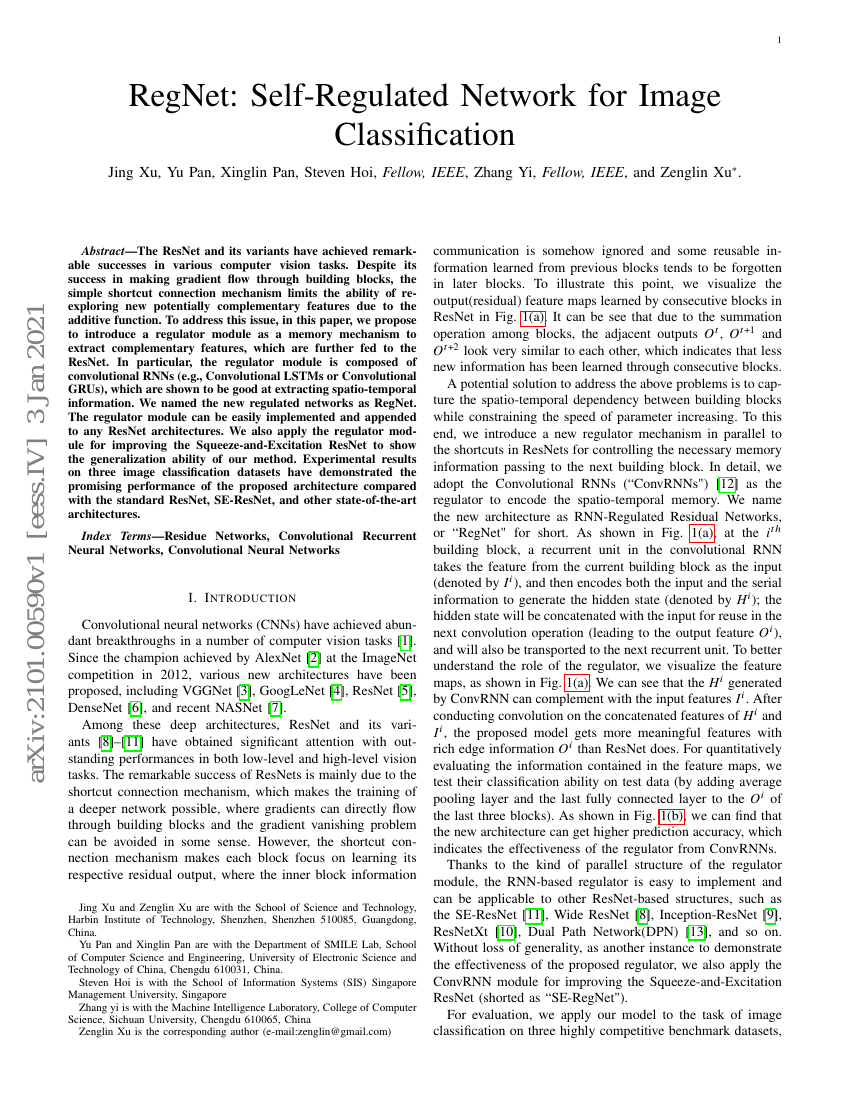Command Palette
Search for a command to run...
Jing Xu Yu Pan Xinglin Pan Steven Hoi Zhang Yi Zenglin Xu

Abstract
The ResNet and its variants have achieved remarkable successes in various computer vision tasks. Despite its success in making gradient flow through building blocks, the simple shortcut connection mechanism limits the ability of re-exploring new potentially complementary features due to the additive function. To address this issue, in this paper, we propose to introduce a regulator module as a memory mechanism to extract complementary features, which are further fed to the ResNet. In particular, the regulator module is composed of convolutional RNNs (e.g., Convolutional LSTMs or Convolutional GRUs), which are shown to be good at extracting Spatio-temporal information. We named the new regulated networks as RegNet. The regulator module can be easily implemented and appended to any ResNet architecture. We also apply the regulator module for improving the Squeeze-and-Excitation ResNet to show the generalization ability of our method. Experimental results on three image classification datasets have demonstrated the promising performance of the proposed architecture compared with the standard ResNet, SE-ResNet, and other state-of-the-art architectures.
Code Repositories
Benchmarks
| Benchmark | Methodology | Metrics |
|---|---|---|
| image-classification-on-gashissdb | RegNetY-3.2GF | Accuracy: 97.48 F1-Score: 98.70 Precision: 99.97 |
| medical-image-classification-on-nct-crc-he | RegNetY-3.2GF | Accuracy (%): 95.42 F1-Score: 97.39 Precision: 99.97 Specificity: 99.43 |
Build AI with AI
From idea to launch — accelerate your AI development with free AI co-coding, out-of-the-box environment and best price of GPUs.